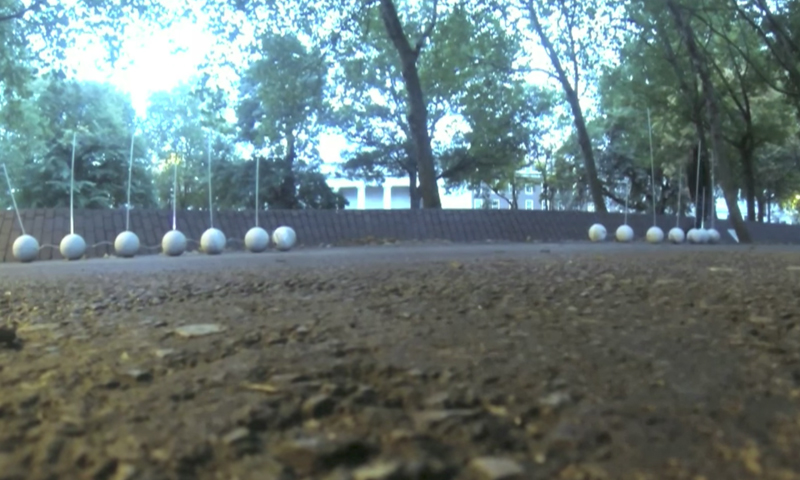Social (re)connection: choreographing architectural gestures in urban spaces

30 November 2016
Awarded the UCL Grand Challenge of Human Wellbeing: Behaviour Change Month Research Prize 2013, this research project sought to explore how social connections could be choreographed through a refashioning of the architectural gestures of non-place through the examination of the potential of design interventions in urban spaces to enhance social connectedness, create a sense of wellbeing and change the way people connect with the space and with others in it. The project takes Marc Augé’s (1995) notion of non-place as its starting point.
This assumes that highly transient spaces produced by supermodernity and used only for their functionality, deny the opportunity to create relational, historical or personal identities. The negative effects of ensuing social disconnectedness are striking, with loneliness and social isolation known to predict a number of physiological and psychological conditions. Drawing from principles of behaviour science and design research, strategies for enhancing social connections in urban spaces were identified.
A design call that embodied these strategies was developed and the commission awarded through a competitive process to Ivana Petrusevski and Deyan Nenov for the design concept sPins. Euston Square Gardens in close proximity to Euston station in London provided a case study for this field experimentation.
- People
PIs: Claire McAndrew and Sonali Wayal
Co-Is: Anna Mavrogianni, Keith O’Brien, Manu Savani, Nikhilesh Sinha, Odysseas Diakakis-Damianidis, Emilie Glazer and Sarah O’Farrell
- Output
The following outputs resulted from the project:
- A summary report submitted to the UCL Centre for Behaviour Change that presented in detail the study design and results,
- Two academic papers, one presenting the study methodology and key findings, and one focusing on the ethnographical aspects of the study,
- The sPins installation designed by Ivana Petrusevski and Deyan Nenov in Euston Square Gardens 14-20 October 2013, as part of the Bloomsbury Festival (19-20 October 2013) of which the remit was ‘Connecting Communities’.
A short film documenting the sPins installation available via Bartlett TV: http://www.youtube.com/watch?v=k_PVkN_qxeU
Dissemination activities were intended to complement project deliverables. The project sPins formed part of the Bloomsbury Festival (19-20 October 2013) of which the remit ‘Connecting Communities’. A public talk titled ‘Meet the designers of sPins | Choreographing architectural gestures in urban spaces’ was given as part of the festival program on 17 October 2013. The Social (Re)Connection project findings were also presented at the UCL Centre for Behaviour Change Summer School 2014.- Impact
The findings of this exploratory study provide a lens through which to understand the conceptual robustness of Augé’s non-place and the possibility of (re)choreographing the urban fabric for human wellbeing. The insight garnered in relation to connections to the space is compelling and appears to support the redesign of architectural gestures for positive effect. The complex nature of social interactions in non-places indicates that the facilitation of social connections to others through architectural gestures and their potential to impact human wellbeing needs to be explored in future long-term research.
The strengths and limitations of the approach adopted in this pilot research are reviewed. The project offered a set of symbiotic design and psychosocial principles for enhancing social connectedness in non-places and speculation on future research directions that pave the way for more ambitious future experimentation.
- Links
of sPins | Choreographing architectural gestures in urban spaces
For further information please contact: Anna Mavrogianni
 Close
Close

